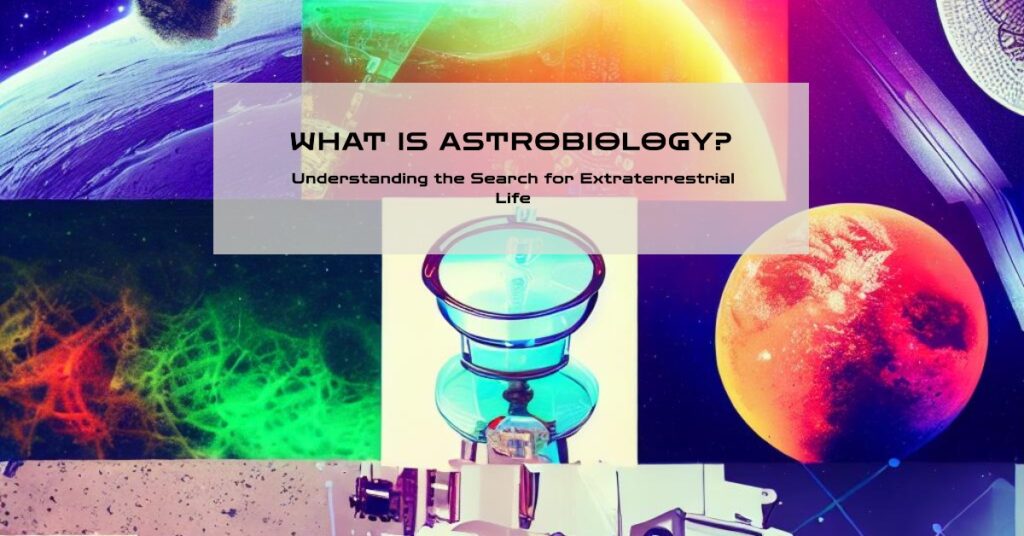Astrobiology is a fascinating interdisciplinary field that seeks to answer the fundamental question of whether life exists beyond Earth. The field integrates several scientific disciplines, including biology, chemistry, physics, astronomy, geology, and planetary science. It aims to understand the origins, evolution, distribution, and future of life in the universe. In this article, we will explore the origins of astrobiology, the importance of the field in the search for extraterrestrial life, the key concepts of habitability and biosignatures, the techniques and tools used in astrobiology research, and the future of the field.
The Origins of Astrobiology: The Search for Life Beyond Earth
Astrobiology has its roots in the study of astronomy and the search for extraterrestrial intelligence (SETI) in the 1960s. In the following decades, the discovery of planets outside our solar system and the exploration of our solar system through space probes led to a renewed interest in the search for life beyond Earth. The field of astrobiology emerged in the late 1990s, as scientists began to recognize the need for an interdisciplinary approach to the search for extraterrestrial life.
The Importance of Astrobiology in the Search for Extraterrestrial Life
Astrobiology is crucial to the search for extraterrestrial life because it provides a framework for understanding the conditions necessary for life to exist and thrive. By studying the origins, evolution, and distribution of life on Earth, astrobiologists can identify potential habitats for life elsewhere in the universe. The field also helps to guide the development of space missions and telescopes that can detect biosignatures, which are signs of life, on other planets.
Key Concepts in Astrobiology: Habitability and Biosignatures
Habitability refers to the conditions necessary for life to exist and thrive. These conditions include the presence of liquid water, an energy source, and a stable environment. Biosignatures are signs of life, such as the presence of oxygen or methane in a planet’s atmosphere, that can be detected from a distance. Identifying habitable environments and biosignatures is crucial to the search for life beyond Earth.
Techniques and Tools in Astrobiology Research
Astrobiology research employs several techniques and tools to study the potential for life in the universe. Some of these include:
- Remote Sensing: Remote sensing involves using telescopes and space probes to gather data about planets, moons, and other celestial bodies from a distance. This data can be used to determine a planet’s composition, atmosphere, and other physical characteristics that could indicate habitability.
- Laboratory Experiments: Laboratory experiments are used to simulate the conditions on other planets to study how life might survive and thrive in such environments. For example, researchers might simulate the extreme conditions on Mars, such as its low atmospheric pressure and high levels of radiation, to study the survival of extremophile microbes.
- Field Studies: Field studies involve studying extreme environments on Earth that are similar to those on other planets, such as the dry valleys of Antarctica or the hydrothermal vents at the bottom of the ocean. By studying these environments, astrobiologists can gain insights into the potential for life to exist in similar environments elsewhere in the universe.
The Future of Astrobiology: Advancements and Discoveries
Astrobiology is a rapidly evolving field, with new advancements and discoveries being made all the time. Some of the key areas of research in astrobiology include:
- Exoplanet Exploration: With the discovery of thousands of exoplanets, astrobiologists are now focusing on characterizing these planets to determine their potential for life.
- Biosignature Detection: Developing new techniques and tools for detecting biosignatures is a crucial area of research in astrobiology. This includes the development of new telescopes and space probes that can detect the chemical and physical signatures of life on other planets.
- Life Detection Missions: Astrobiologists are also developing new missions to search for life beyond Earth. These missions could involve sending landers or rovers to other planets, or even drilling into the subsurface of Mars or Europa to search for signs of life.
Astrobiology is a fascinating and interdisciplinary field that seeks to answer some of the most fundamental questions about life in the universe. By understanding the conditions necessary for life and the potential for life beyond Earth, astrobiologists are making significant strides in the search for extraterrestrial life. As advancements in technology continue to push the boundaries of what is possible, the future of astrobiology looks brighter than ever.

C M, a seasoned editor, journalist, and consultant, is deeply fascinated by the convergence of technology, space, and the future of humanity.
With a particular interest in transhumanity, futurology, and the philosophical and ethical dimensions of these domains, C M serves as the lead contributor to SpaceSpotlight and TranscendSphere.
When not penning insightful articles on these rapidly evolving fields, C M indulges in their love for podcasts and books, proudly embracing their status as a ‘Happy Nerd Extraordinaire!’



